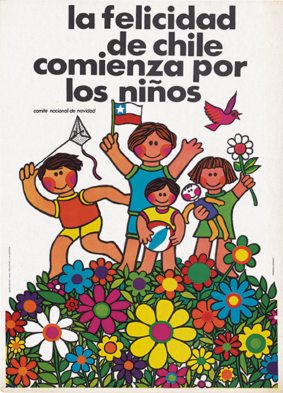Smiles that Give Back
By Charlene Pepiot
What do you feel when you see a smiley face emoji? Does it beg you to smile back? Many people find its simple dot eyes and wide grin exceedingly charming, and it’s easy to see why the yellow smiley face has cemented itself as a cultural staple, appearing on backpacks, stickers, emojis and more. Where exactly did it come from, though? Read Smiles that Give Back to find out.
The iconic yellow smiley face began to crop up during the 1950s, but its most notable incarnation would come in 1963 when graphic designer Harvey Ball was approached by an insurance company to create a morale booster for employees. As the legend goes, Harvey Ball created the smiley face in 10 minutes and was paid $45 for what would become within a few decades a cultural phenomenon.
Ball was not the only one who saw the potential in the smiley face, though. In the early 1970s, Hallmark reps Bernard and Murray Spain altered the design and added the phrase “have a nice day” to the face before selling various merchandise with the design.
An ocean away in 1972, the French journalist Franklin Loufrani began using a yellow smiley face in the newspaper France Soir to highlight good news stories in the paper. Seeing the design’s possibilities, he then cleverly trademarked the smile in some 100 countries and created the Smiley Company.

Clearly, many people saw great potential in the simple grin.
What is it about the yellow face that’s so darn loveable, though? Some claim its simple happy expression evokes a similar feeling in the viewer. Others believe it represents consumerism and the need to buy material goods to be happy. Still, others have reinterpreted the smiley face to suit their own forms of self-expression, such as Nirvana’s smiley face complete with a squiggly grin and tongue sticking out, or the smiley face emoji used to communicate emotions when texting. There is a universal appeal to the yellow smiley face and its ability to morph into whatever its creator dreams of.

Nowadays, some variation of a yellow smiley face can be found on almost anything, from party supplies to backpacks to cupcakes and much more, these versions of the original emoji were created by Nicholas the son of the original french licensee.
Together with Bicester Village, they go the extra mile when it comes to reinventing the smiley design. Their SMILEY x DO GOOD campaign seeks to encourage people in all of the shopping villages in the UK, Europe and China to smile and do good with an array of smiley-themed merchandise.
Not only do their t-shirts, tote bags, beach towels, water bottles, hats and sliders look cheerful and fabulous, but a whopping 100% of proceeds go to charities supported by The Bicester Collection’s DO GOOD program.
Smiley and Bicester Village are going all in with this fundraiser. The funds raised will be donated to ten charities that empower women and children to help them reach their full potential. Is there anything better than being able to give back when you buy?

DO GOOD supports charities that include giving children with serious illnesses a chance to smile and have the fun childhood they deserve such as Barretstown Camp, L’envol Camp and Make-A-Wish. Great Ormond Street Hospital Charity, which researches and improves care for childhood diseases is also supported. Children’s education in the UK and China are bettered through the charities Intouniversity and Adream respectively, while women in need are given resources and skills to improve through the Women for Women International, World Connect and charity: water, Brides do Good and Smart Works.
DO GOOD also promotes organizations like Partners In Health, which helps provide care and improve public health systems for cancer and chronic disease, child health, mental health, tuberculosis, emergency response, HIV/AIDS and maternal health.
DO GOOD’S smiley-themed items can be found in pop-up huts in the shopping village from July 14th. Be sure to act fast, as they are quickly selling out.
Partnering with Bicester Village is not the Smiley Company’s first foray into giving back, though. Smiley’s Future Positive program strives to make people smile with its products and its sustainable impact by partnering with future-thinking brands to create limited edition sustainable products along with charitable giving opportunities. The company hopes that this business model of sustainability and charity will encourage other producers to do the same.
The yellow smiley emblem can make us smile and as the famous song goes–not worry and be happy with the knowledge what you buy is helping people in need.
You shouldn’t feel guilty over buying for yourself, but it is nice to be able to give back, and these smiley face items do just that 100%–literally. Now that is certainly something to smile about!
Learn more about the Bicester Village here
There are eleven luxury shopping destinations in Europe and China you can find here
Find out more about Smiley here.
Do sustainable products that give back make you smile? Read about skincare that does just that in Refill Natures Void here.
.Cent Magazine, London. Be Inspired; Get Involved.






